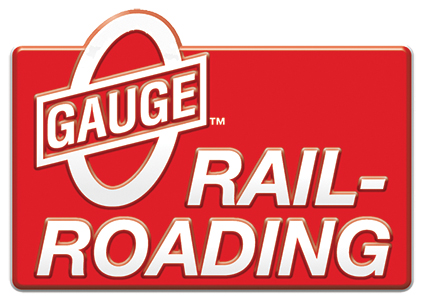I replaced the incandescent bulbs in an MTH tower with 8mm 100ma wide angle leds. I put pigtails on before installing. They are snug enough that I didn't have to drill the housing after popping the old sockets out with a small screwdriver. The top and bottom pair are each wired in series with a 56ohm resistor. The hard part was keeping track of + and - on all black wires. I have 12vdc for all my lighting and signals. The last picture shows the difference, and it was during daylight.
Replies sorted oldest to newest
They look so much better and are much more reliable. I did the same thing but drilled out the housing so I could put the grill back in.
They turned out looking darn good John! I have some 5mm think they would work ok??![]()
What a good idea. Why didn't I think of that?
mike g. posted:They turned out looking darn good John! I have some 5mm think they would work ok??
Mike they will work but are small compared to the housing. Plus the 8mm LEDs are wide angle high out put... its a totally different creature than a standard 5mm LED.
6 of the MTH Flood Light Towers light up the whole facility at night. I have 2 more but they weren't really needed. I also have them connected to a voltage regulator so I can turn them down if needed.
Attachments
I did an earlier one with ultra ww 5mm leds, but as LAIDOFFSICK points out, they are quite different. They fit better, but are more like spotlights than floods. I twisted the led leads 90 degrees on the 8mm ones so I could pinch them together. That way I was able to get them in far enough to put the grills back on. Both towers in the last picture have the grills, but the camera doesn't show them.
Thanks for the information Doug, one more question. Have you ever really seen a red light tower in a real yard?![]()
A red light tower? NO. Who has a red light tower Mike?
LOL Doug, I have 2 from Lionel. I am thinking about painting them Black or Silver!![]()
Mike, Sell the red one and buy a silver, for some reason they seem to be expensive!
BTW- great thread here
That's a nice-looking engine yard. Guess you have the time when your laid off sick.![]()
What type of led, Cool, Warm or bright white?
Eric,
I used these: 151187143491 from eBay.
Thanks John
They are 56 ohm 1 watt resistors. I just shrinkwrapped them and tucked the wires down behind the lights. The eBay # is 272512257278. I use this calculator
Right. When using (relatively) hi-power 8mm LEDs, when doing the math with LED-calculators or whatever you find you need to use 1 Watt resistors. Dale H in his LED tower conversion write-up shows how to use a pair of 1/2 Watt resistors instead of a 1 Watt resistor. So instead of a 56 ohm 1W resistor, one could use two 27 ohm 1/2W resistors in series to "make" a 54 ohm 1W resistor...or two 120 ohm 1/2W resistors in parallel to "make" a 60 ohm 1W resistor. 27 ohm and 120 ohm are common value resistors and the difference from 56 ohms is immaterial.
For cheapskate DIY'ers you can usually find 1/2W resistor for a few pennies each whereas a 1W resistors can nick your wallet. Yes, you have to solder and extra joint or two...but you might gain a bit of flexibility on spreading the heat coming from the resistor(s) especially if mounting in an enclosed area or against a piece of plastic.
Attachments
My resistors are wired in under the layout and I used the high output, warm 8mm LEDs.
Stan,
You always have good information, I just wish I could remember half of it. I just had them on for 45 minutes after I read your post, no heat at all. But I thought I read that resistors in parallel involved a more complicated formula than adding them together and dividing by two. Anything to that? I have an assortment of 1/4 watt. I will get one for 1/2 watt also.
There's about 1/2 Watt coming out of each 56 ohm resistor. You must be "thick-skinned" if you feel no heat! ![]()
I think you're referring to calculating the effective series and parallel resistance for two resistors, say, R1 and R2.
Series is "easy"... just add the values together. Effective R = R1 + R2. So two 27 ohms resistors in series is effectively 54 ohms.
Parallel is indeed more complicated... Effective R = (R1 x R2) / (R1 + R2). If the two resistors are the same value, it simplifies to 1/2 the value. So two 120 ohm resistors in parallel is effectively 60 ohms.
I prefer the easy math. Thanks, I'll try to remember that much.






